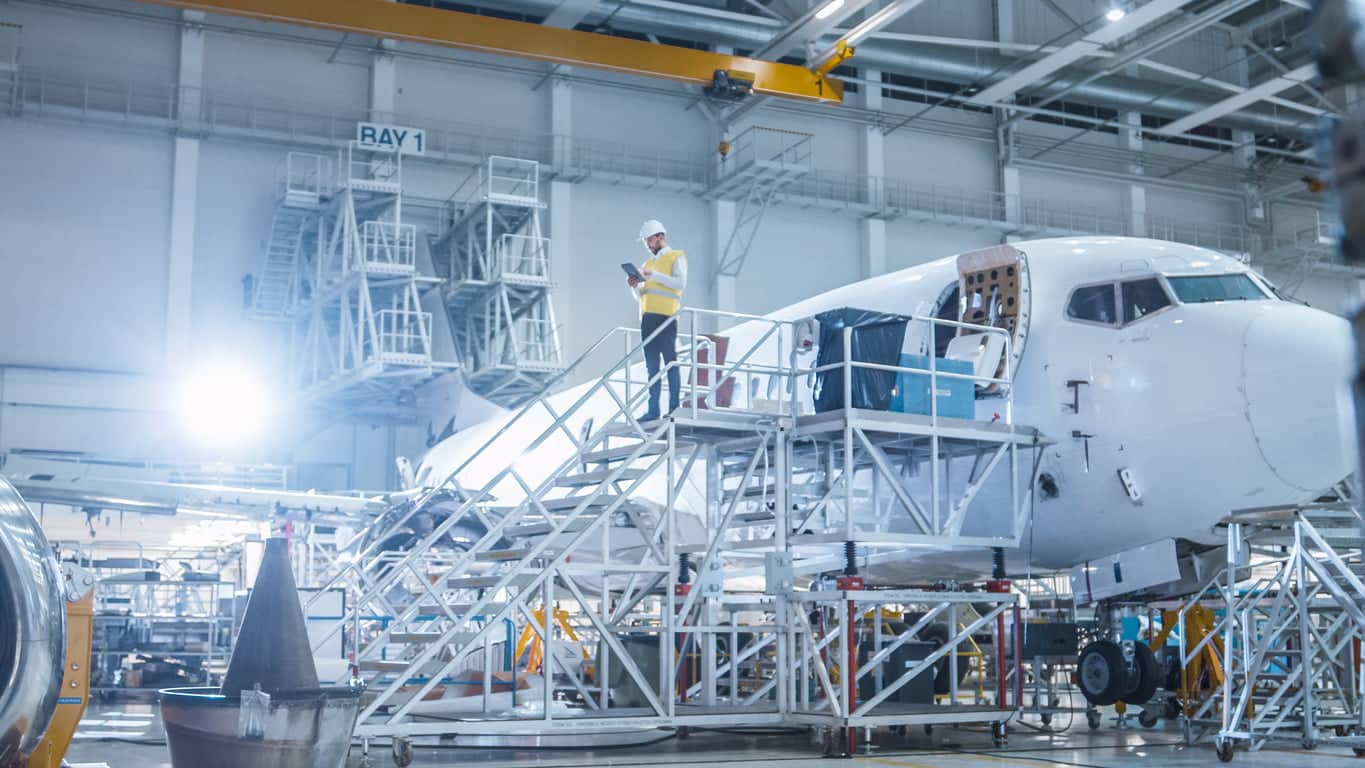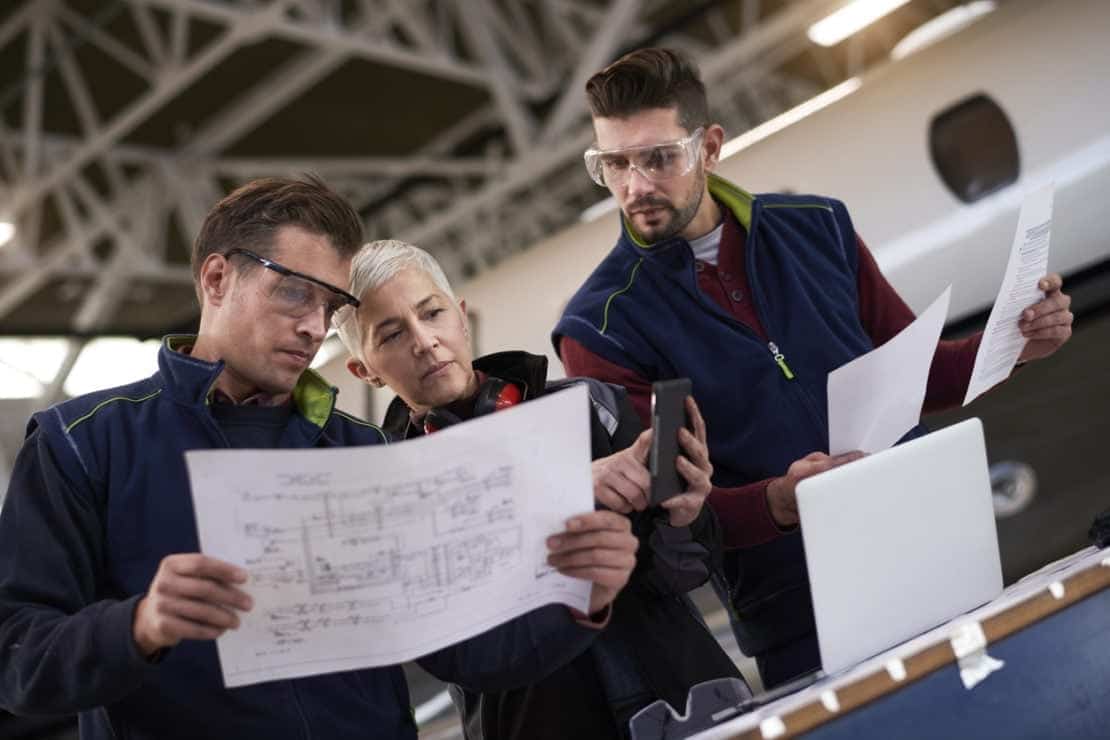8 Challenges Facing the Aerospace Industry

From lengthy sales processes and aggressive delivery cycles to highly scrutinised compliance regulations and changing regulations, the aerospace industry faces many obstacles in its day-to-day supply chains and workflow management. But what challenges pose the biggest risks to continuity, efficiency and productivity? And how can firms overcome them?
Here, we’re taking a look at eight challenges facing the aviation industry, from cybersecurity and digital transformation to the fallout of the coronavirus pandemic.
1. COVID-19 and Its Fallout
The ongoing coronavirus pandemic has led to unprecedented disruption in the aerospace arena. With planes grounded and production grinding to a halt, there’s no telling what the long-term impact of COVID-19 on the aerospace sector will be.
While the uncertainty of successive lockdowns brought aeronautics to its knees, it’s perhaps the long-term outlook that is now of most concern. The pandemic may have changed people’s habits for good, with long-distance Zoom calls and cloud-supported collaboration replacing frequent flyers and corporate overseas travel.
Of course, things could go the other way. As countries reopen their borders to increased travel, demand for flights is expected to soar – marking a significant boon for the aeronautics sector.
2. Manufacturing Digitalisation
Manufacturing is changing. As digital transformation accelerates and high-tech start-ups disrupt the status quo, aeronautics manufacturers must continue to innovate and modernise if they’re to land contracts and keep pace with the changing climate.
3D printing, modular design and cloud-enabled automated production – these are just some of the transformative trends which look set to shake up the aeronautics industry in the coming years. Manufacturers throughout the aeronautics supply chain should sure-up their business strategy for the long term, setting funds aside to invest in technologies as they emerge.

3. Climate Change
Climate change, and the actions introduced to kerb it, presents major short and long-term challenges for the aeronautics sector. As awareness around the impact of flying continues to proliferate, it’s up to manufacturers to come up with innovative new solutions which will render air travel sustainable for future generations.
And don’t forget, it isn’t just climate action that will affect the aeronautics industry; climate change itself could have major repercussions. For example, should temperatures continue to rise, this will have a major impact on the performance and efficiency of aircraft. It’s expected that an increase in storm systems, coupled with unpredictable atmospheric changes, will also need to be factored into the future of air travel.
4. Weak Supply Chains
The aeronautics industry relies on an intense, high-demand supply chain. Alone, major players like Boeing, Lockheed Martin and Airbus place a huge demand on the wider industry – with aggressive delivery cycles and complex, multinational supply infrastructures.
As globalisation continues, the aeronautics sector could see a weakening of its collective supply chain. Convoluted sales processing, coupled with bureaucracy and compliance issues between overseas trading partners, mean that manufacturers must invest time and resources in developing a watertight supply chain strategy if they’re to maintain a competitive advantage in their market space.
5. Cybersecurity
Cybersecurity is the single biggest threat facing the aeronautics industry. Why? Because cybercriminals recognise that firms within the sector are asset-rich, with vast swathes of high-value data and digital assets. This makes them attractive targets for hackers, who target vulnerabilities at every level of the manufacturing supply chain.
Given the serious threat cybercriminals pose from a privacy and monetary standpoint, aeronautics specialists should invest time, money and resources in the very latest cybersecurity technology. And this extends beyond antivirus software; an across-the-board approach to safety, supported by a modern ERP system, can help maintain digital security across a complex supply chain.

6. Skills Gaps
While aerospace manufacturing is a high-tech industry, the maturity and scale of its major firms mean that outdated practices are somewhat prevalent within the sector. Consider that factory floors were once populated by workers from the baby boomer generation; now that many of them are reaching retirement age, the risk of a skills shortage is a genuine threat to productivity and efficiency.
Finding experienced aeronautic engineers with the practical knowledge to oversee manufacturing projects is now a major challenge for businesses in the industry. Firms will need to develop effective training programmes and management initiatives going forward while making sure they offer an innovative and progressive working environment for the next generation.
7. Increasing Passenger Traffic
Although there are question marks over the long-term viability of air travel from a climate change standpoint, passenger numbers are expected to continue to rise in the next few years – particularly as lockdown restrictions continue to ease around the world.
What does this mean for the aeronautics sector? A careful balance between meeting passenger demand while demonstrating sensitivity to the climate emergency is needed. Firms must be in a position to handle changing demands during what looks set to be a challenging trading environment, so an agile, responsive strategy may be prudent in the months and years ahead.

8. Maintaining and Modernising Existing Aircraft
Aeroplanes have a deceptively long operating life, with some commercial passenger jets having been in use since the 1970s and 80s. That’s thanks to a rigorous fix-and-maintain programme operated by all major airlines and aeronautics firms; a capital-efficient strategy compared to the cost of a whole new fleet.
But as regulation evolves at pace and scrutiny over emissions increases, how viable is it to continue with this make-do-and-mend strategy? Aeronautics firms face being trapped between a rock and hard place on this issue, with limits on the number of new aircraft coupled with the difficulty of adapting ageing planes to meet ever-tightening emissions criteria.
Do you work within the aviation industry? What do you think poses the biggest challenge for the industry in the coming years?
At JS3 Global, we’re experts in solving problems and recommending innovative solutions for our clients, including those in the aviation industry. Our ERP specialists can advise on the latest software capable of streamlining your day-to-day operations, including expert ERP consultants and standalone business management platforms. For more information or to speak to a member of our team, call us on 0161 503 0866 or email us at enquiries@js3global.com.